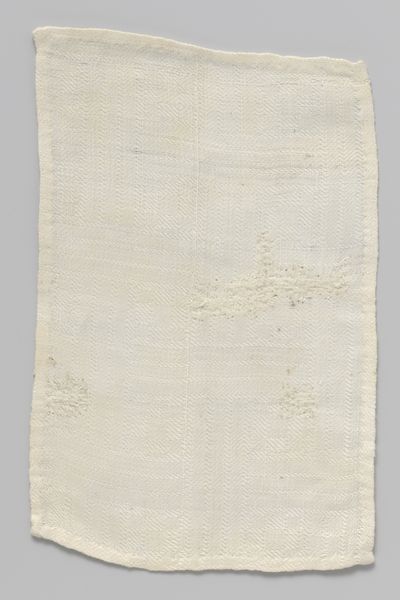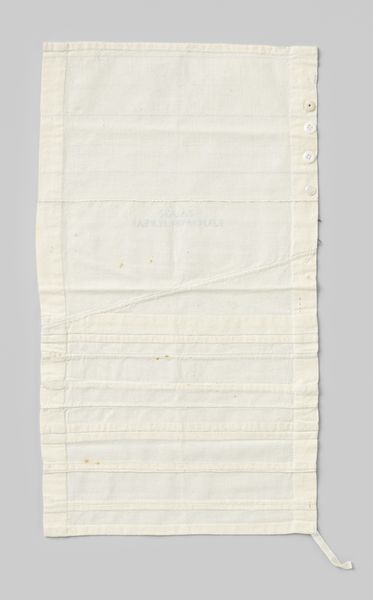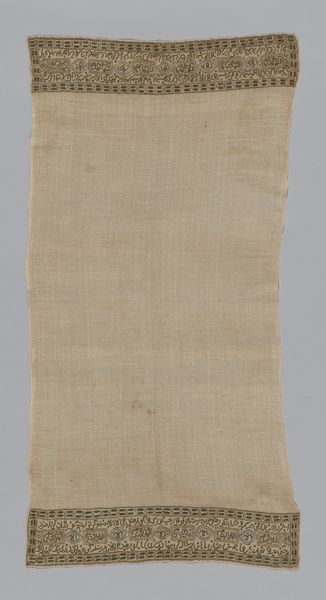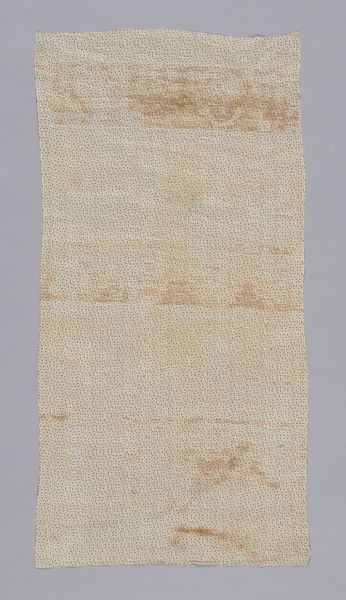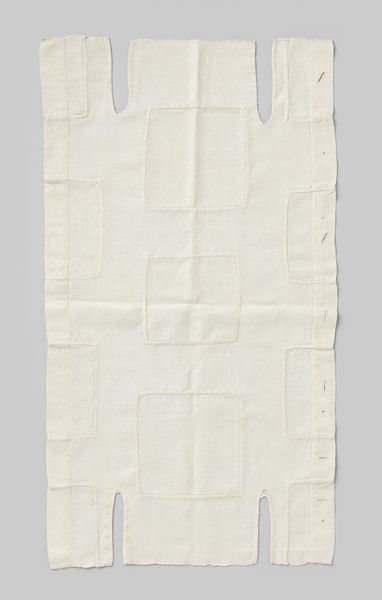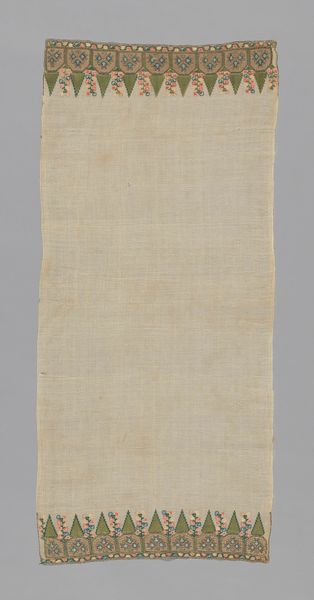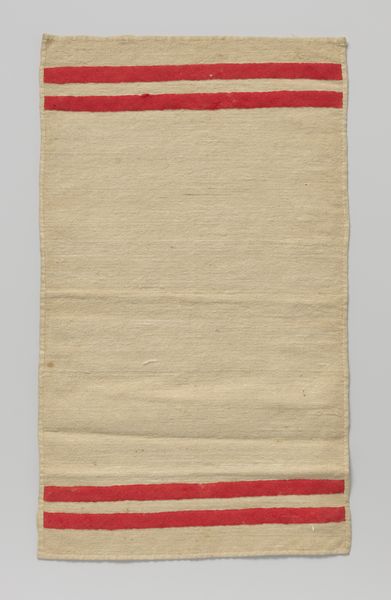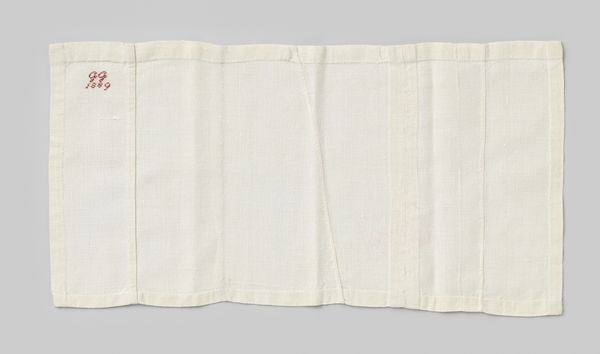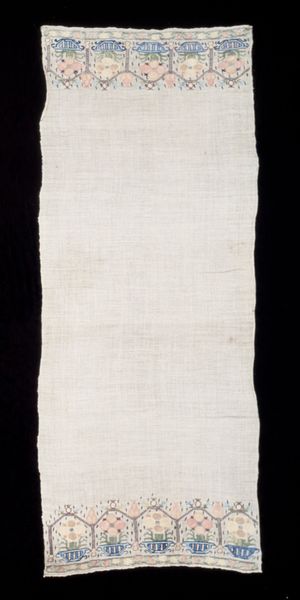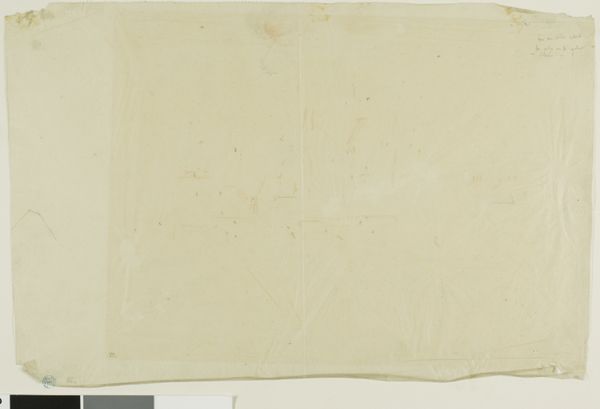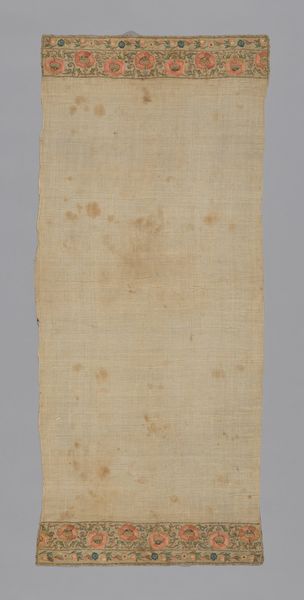
Witte rechthoekige doek met ingeweven geometrisch patroon c. 1836 - 1898
0:00
0:00
fibre-art, weaving, textile, cotton
#
fibre-art
#
weaving
#
textile
#
geometric
#
fabric design
#
cotton
#
imprinted textile
Dimensions: height 10 cm, width 16.5 cm
Copyright: Rijks Museum: Open Domain
This small, rectangular cloth with woven geometric patterns was created by Susanna Maria van Pabst Rutgers-Linse in the Netherlands, though we don't know exactly when. The cloth, with its modest size and simple design, speaks to the domestic sphere and the role of women in 19th-century Dutch society. During this period, women's artistic expression was often confined to crafts and decorative arts, rather than the fine arts. Weaving, embroidery, and other needlework were seen as suitable hobbies and skills for women of the middle and upper classes. The geometric pattern, while simple, demonstrates skill and attention to detail. This cloth also offers insight into the economic structures of the time, because even simple materials like this were commodities within trade networks. Studying the origins and trade routes of the materials used in this weaving can reveal details about Dutch society and its global connections. By examining the social and cultural context in which this cloth was created, we gain a deeper understanding of the lives and experiences of women in 19th-century Netherlands. Museum archives, historical societies, and genealogical databases can all help us uncover the story behind this object.
Comments
No comments
Be the first to comment and join the conversation on the ultimate creative platform.
